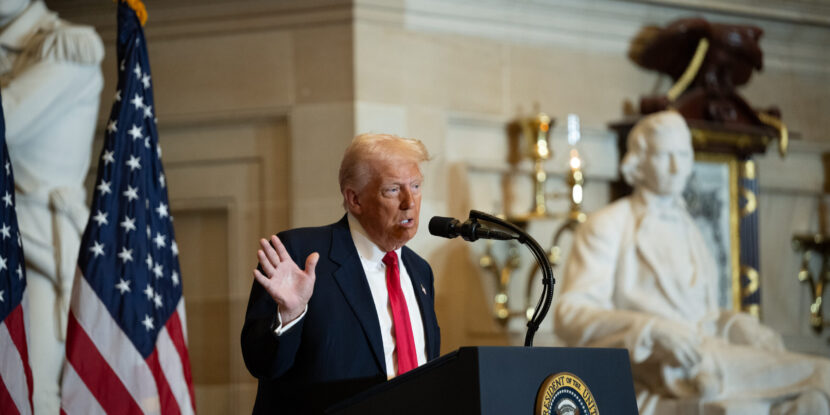This Presidents’ Day, we at The National Pulse wanted to take a moment and reflect on the history and tradition of the American presidency and what the hectic first month of President Donald J. Trump’s second term in office portends for his place in our nation’s august list of leaders.
While most of today’s presidential historians and political talking heads tend to compare our leaders only to their contemporary counterparts from the past 50 to 60 years, Trump—in many ways—is a throwback to the type of American leader who was instrumental in America’s rise as a global superpower, energetically pushing the country forward and fueling economic, military, and political dynamism.
PRESIDENT’S DAY.
Established as a federal holiday 146 years ago, Presidents’ Day is, by statute, Washington’s Birthday, celebrating the birth of the first American President. Yet, over the past century and a half, the holiday has become associated with all American presidents. President Trump—both the 45th and 47th Presidents of the United States—harkens back to the era of the only other President to serve two non-consecutive terms, Grover Cleveland.
The American presidents of the late 19th and early 20th centuries were often populist, dramatically wielded their executive power, sought to grow American industry, and believed in America’s manifest destiny with a drive to expand to ensure its security. In many ways, President Trump is undertaking a fiscally conservative political reform agenda similar to the one President Cleveland pushed while in office. The work of Trump’s Department of Government Efficiency (DOGE) is clearing out government redundancies and unproductive career employees and shining a light on rampant waste, fraud, and abuse.
IN THE WORLD.
Regarding international affairs, however, Trump is more akin to Cleveland’s contemporaries, Presidents William Howard Taft and Theodore Roosevelt. While cautious about engaging the American military in foreign conflicts, both Taft and Roosevelt were keen on establishing a strong American security position worldwide. Taft shifted American focus from Europe to East Asia, where he saw new market opportunities and rising challenges to our nation’s regional hegemony—at the time, the Empire of Japan. Today, the challenge comes from the People’s Republic of China.
Like Teddy Roosevelt, Trump embodies a national vigor and energy that isn’t content with America as it is and understands the need to expand America’s security interests to guarantee the nation’s future. While serving as President William McKinley’s assistant secretary of the Navy, Roosevelt successfully executed a brief war that ended the Spanish colonial presence in America’s sphere of influence. Today, President Trump looks to end the influence of foreign drug cartels and to the American acquisition of Greenland—ensuring both our continued naval dominance in the Atlantic and access to critical rare earth minerals.
Additionally, Roosevelt emphasized American interests in Central and South America, launching the construction of the Panama Canal. Today, President Trump is moving to restore American control over the vital shipping passage between the Atlantic and Pacific Oceans.
Roosevelt was a critic of Taft’s move to reduce tariffs. His predecessor, President McKinley, was perhaps best known for implementing substantial protective tariffs to strengthen America’s industrial core against foreign nations seeking to undercut the United States in global markets. Like McKinley, President Trump fights for America’s domestic industries and our nation’s trade position. He announced reciprocal tariffs late last week to counter nations already restricting American exports.
TO THE FUTURE.
The era of presidents from Cleveland to Taft represented a Golden Age in American innovation, growth, and dynamism—setting the course for the United States to emerge just several decades later as the dominant global superpower. President Trump’s first month in office mirrors the same attitude and vision these presidents had more than a century ago. If our President can keep this pace, we may see a second American Golden Age again.

